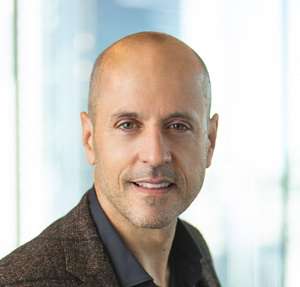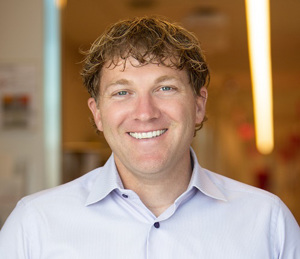Solving The Equation For A Cell Therapy Development Strategy

By Louis Garguilo, Chief Editor, Outsourced Pharma

Nowadays, “biotechs” emerge with unique business models, are hybrids of one kind or another, and operate as developers, platform/technology creators and service providers rolled up into one glorious organization.
I found another one of this breed at Umoja Biopharma, Inc., a Seattle, Washington-based cell-therapy company.
In a conversation with Umoja co-founders Andrew Scharenberg (Chief Executive Officer) and Ryan Crisman (Chief Technical Officer), I learned how Umoja comingles the above components into a business model for developing and propagating an advanced lentiviral technology, building an internal pipeline, constructing a manufacturing facility, and utilizing CDMOs.
Formed in November 2019, Umoja is conducting phase-one and preclinical studies, led by a phase I study in collaboration with Seattle Children’s Hospital of “Fluorescein-Specific (FITC-E2) CAR T Cells In Combination With Parenterally Administered Folate-Fluorescein (UB-TT170) For Osteogenic Sarcoma.” (Umoja’s full pipeline is here.)
The company’s main focus is on in vivo CAR T-cells generated within a patient’s body without the need for pretreatment with chemotherapy (lymphodepletion) – and with the potential to be effective in solid tumors, a challenge in the CAR T space.
We’ll sift through all that’s going on at Umoja as an illustration of the complexity of biotechs today, but naturally for us, let’s start with that outsourcing piece.
Timing And Tactics

The CEO says his approach to working with CDMOs has been informed by a string of earlier career experiences, but now at Umoja, “it’s the collective experience of our leadership team” that drives decision-making.
The context for this internal brain trust, says Scharenberg, starts with the complexity of their emerging technology – “a vector system that hasn’t been widely industrially applied [as a drug product].”
The challenge for CDMOs is this novelty.
“There’s not a well-established recipe for production. We are pushing the envelope in terms of what we are doing with that particular type of gene-therapy vector,” says Scharenberg. “Our platform involves proprietary modifications of the surface of the vector to endow the vector particles with the capacity to efficiently transduce T-cells in vivo. This shifts our manufacturing needs away from standard methods. “
Scharenberg tells me he has “huge respect” for the CDMO community and how it’s able to repeatedly generate high-quality drug-products across a range of modalities and scales. Moreover, we’ll learn subsequently, Umoja intends to partner with CDMOs in the future to establish their technology for utilization by other cell-therapy sponsors.
For the moment, though, the novelty is challenging.
“We are trying something new. The ability to adapt to incoming data may require our development and cGMP manufacturing timelines to shift,” Scharenberg explains.
“We can’t get stuck with a single time slot at a CDMO. And we don’t have the time to get their team up to speed, but then have these talented people recruited away, leaving us with a new team with a new learning curve – which happens to any high performing team when members change. That's the current context for us.”
His concern over skilled workers had been building for some years leading up to the early parts of 2021, when the demand for cell and gene therapies “pulled experienced workers into companies developing those products.” That has left the pool of workers at CDMOs with relatively less experience.
The economy has also been impactful, particularly the change in equity capital markets.
Interestingly, says Scharenberg, as access to capital becomes more restrained for biotechs, one impact may include those more experienced workers who joined sponsors to work on their own products, begin to filter back to the CDMOs.
I mention a recent editorial in Outsourced Pharma titled, Should You Hire Talent Away From Your CDMOs?
“Maybe not,” he says with a laugh.
No laughing matter is the escalating skilled-employee grab has taken on ultra-competitive tactics.
Scharenberg adds with some hesitancy, “I’ve heard it espoused that one strategy for entering a new area of technology is to hire everybody one can with experience in that technology for the purpose of blocking other’s from accessing key talent.”
Mountains To Climb

“There's a multifactorial equation you're constantly looking at, with business and operational inputs, personnel questions, and financial considerations” among others, he says.
“One of our technology platforms involves small molecules for solid-tumor targeting of CAR T-cells. The small molecule space is established; the chemistry well known; there are many trained folks and multiple decades of manufacturing experience at CDMOs. For us, the decision here is, ‘Let's go use them.’”
On the other hand, he says, choosing to go internal with their lentiviral manufacturing at this point in time presents the other end of the spectrum.
“There is far less experience in developing and manufacturing lentiviral particles to be released and infused directly into a patient. Our in vivo lentivirus team had to develop the analytical and manufacturing solutions for our proprietary technology,” Crisman says.
“This process required our development and manufacturing teams to work directly with our discovery teams to solve problems, sometimes to provide an overnight solution. It’s been a great example of synthetic biology and engineering working together to address manufacturing challenges.
“That's a hard model to go into the CDMO world with,” he says, adding that during COVID he couldn’t even get person-in-plant arrangements.
“If I can’t send my experts – the only ones in the world that know how to do this – to train and assist, it makes the equation hard to solve for using CDMOs.”
So Umoja started building – but, as we hinted above, with CDMOs in mind: We’ll learn specifics of that new facility next, but CEO Scharenberg wants to conclude here with this:
“CDMOs are essential for us to deliver on our full vision. Our innovative manufacturing building, The Colorado Laboratory & Innovative Manufacturing Building (The CLIMB), is designed to allow us to develop the processes that will eventually be carried out by our colleagues in the CDMO industry. I wouldn't want to leave an impression we had to internalize manufacturing because there was a problem with the industry. We needed to innovate internally. It's an evolution. We fully expect CDMOs to be the ones to begin delivering widespread for patients.
“The sooner the better.”
